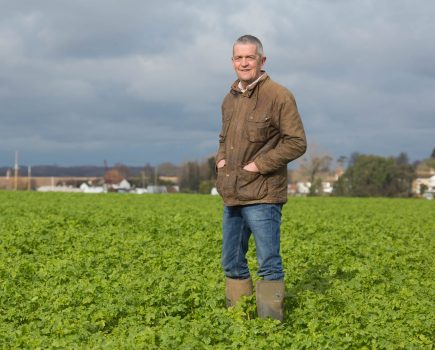
Lead times, that being the time gap between an article being written and it being read, are the bane of the farmer columnist. It used to be the weather or maybe markets that made a sound observation written two weeks previously subsequently look rather foolish.
But never in my wildest dreams or worst nightmares did I think it would be war in Europe that would need second guessing. As I write I can only pray that by the time you read this there has been a de-escalation of conflict and a sense of decent humanity starting to influence what is happening in Ukraine.
While the challenges of running a farm business in the face of turbulent markets are as nothing when compared to the horrors being endured by millions of Ukrainians, the fact remains that for farmers, the impacts on our businesses from this war are like nothing we’ve seen before.
I’ll admit in the past on hearing news that other parts of the world were facing poor or indifferent harvests, my reaction hasn’t always been a charitable or a sympathetic one. The brutal fact is bad harvests elsewhere in the world are good at gingering upwards the grain market, thereby improving business prospects.
But now in the spring of 2022 a new sobering reality has dawned. As I look at off-the-combine wheat prices for harvest 22, the reaction is no longer one of encouragement but rather a chilling feeling of being disconcerted. The world is already a dangerous and unstable enough place, the prospect of poor world harvests fuelling very high food prices only adds to the worry.
While the evening news makes for a very tough watch, that makes COVID seem like yesterday’s trivial concern, I tend to look back in history to see if there are any lessons for today. I will quickly put 1914 and 1939 to one side, but rather concentrate on 1973.
At this time another proxy Cold War was coming to an end as the US withdrew from Vietnam after twenty years of fighting the Soviet-backed Vietcong. Back in the UK, in 1973 farmers were struggling with a lot of unprecedented financial turbulence.
Firstly, there was the destabilising process of a radically changing agricultural policy. In 1973 the UK joined the EEC and from then on, the CAP hatched in Brussels would rule farming fortunes. Interestingly, one outcome of this was to significantly increase the cereal area in the UK. The question now is are we seeing a fundamental reversal of this and is this wise at this time?
Then there was inflation at over 10%. My father told me that it wasn’t uncommon in the 1970s to sell farm machinery for more than you had bought it for a few years previously. Bank interest rates were at an eyewatering 15% and as farmland prices approached £1000 an acre, anyone who had borrowed was under pressure.
Another struggle in 1973 was a sharply escalating oil price that was driving up energy prices to unprecedented levels, including a doubling of the fertiliser price. On the other side of the coin, the wheat price was also in orbit because one major global player had clandestinely bought up another major country’s wheat stocks. The seller was the US and the buyer was Russia, who in 1972 suffered a major harvest failure due to drought in the Volga basin which bizarrely the Americans were unaware of. At the time it was dubbed ‘the great grain robbery’.
Despite all this disturbance and turbulence, most of the old men I know who ran farm businesses in the 1970s now remember them as good times for arable farming.
Guy Smith grows 500ha of combinable crops on the north east Essex coast, namely St. Osyth Marsh – officially the driest spot in the British Isles. Despite spurious claims from others that their farms are actually drier, he points out that his farm is in the Guinness Book of Records, whereas others aren’t. End of. @essexpeasant




